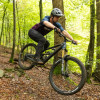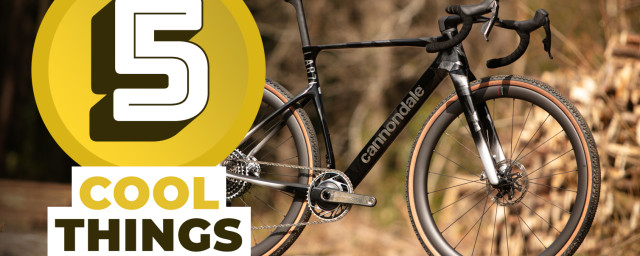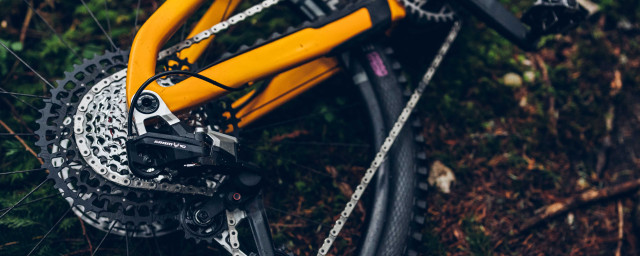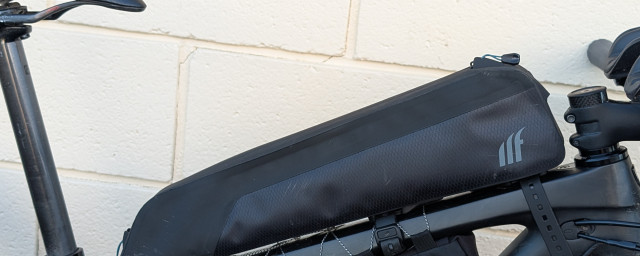Are cross-country bikes the new quiver killers?
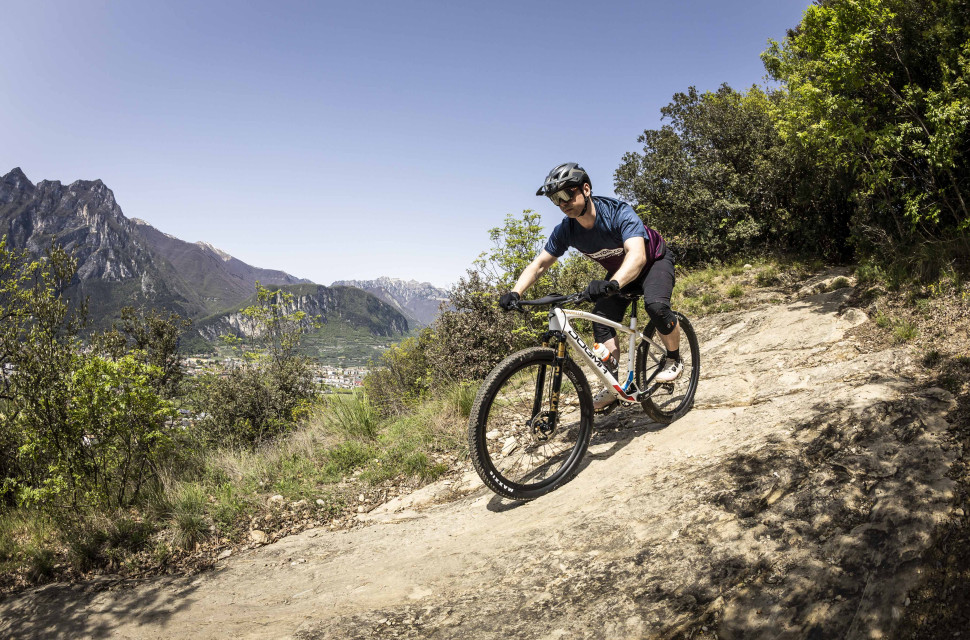
Over the past few years, cross-country bikes have experienced something of an evolution and have changed rather dramatically compared to the cross-country bikes of old. Now, cross-country mountain bikes are expected to take on the widest range of riding as athletes tackle gnarly terrain all while retaining their pedigree when climbing. With the moniker ‘quiver killer’ usually reserved for enduro and many trail bikes, has the quiver-killing ethos shifted towards cross-country?
- Are gravel bikes old-school mountain bikes?
- Wait... How much is the new SRAM T-Type kit?
- Trail essentials - all the kit you need to take on a mountain bike ride
What is a quiver killer?
‘Quiver killer’ refers to the one bike that can do it all. Where some people might have a fleet of bikes with each one specialised towards a certain genre of riding, like a cross-country bike, trail bike, and downhill bike, the fabled quiver killer is a bike that can ascend quickly and descend with just as much speed and confidence.
However, the term can mean many things to many people or, let’s say, many bikes. Many people might claim that an enduro bike is one that can truly do it all because they’re built to do that. An enduro bike needs to be able to climb, so athletes can complete their liaisons in time while being capable and fast enough to minimise seconds during their timed descents.
But the true quiver killer is the holy grail that all brands attempt to chase with every new mountain bike release. After all, having one bike that can do everything we want saves us money, and space in the shed. However, while many bikes have come close, a true quiver killer is yet to exist.
XC bikes are evolving
Compared to its comparatively humble beginnings, what makes cross-country racing cross-country has changed dramatically, and it’s still taking a new shape, Nino Schurter claims a testament to the fact. Now, cross-country athletes are expected to descend incredibly challenging terrain, take last year’s World Cup course for example, rife with gap jumps and intimidating rock gardens. Cross-country riders need to be fit enough to ride super-fast uphill and technically proficient on the descents.
And just like the courses, cross-country bikes are evolving to make that riding easier, while still balancing all-out efficiency, and therein lies my point. Cross-country mountain bikes are now welcoming long reaches and slacker head angles with a prime example being Specialized’s cutting edge Epic 8. Its large frame size benefits from a 66.4-degree head angle and a 475mm reach with a 1,210mm wheelbase. To dive deeper into the Epic 8’s geo, there’s a 75.5-degree seat tube angle and a 435mm chainstay.
Now, if we compare that to a 2016 Yeti SB6C that Richie Rude rode to win his second EWS title that year. It’s an enduro bike with 160mm of suspension that received a lot of praise from owners and media alike and things get rather interesting. The Yeti from way back yonder gets a 65.5-degree head angle, almost a full degree slacker but importantly, a large frame came with a 447mm reach, a slacker 73.2-degree seat tube but a mighty, mighty short chainstay at 442mm. The wheelbase is 1,215mm.
However, the Epic Evo looks even more modern with a head angle that’s a point of a degree slacker than Yeti’s old enduro bike.
Of course, suspension has a huge role to play in the capability of a mountain bike too but with a greater focus on progression, cross-country bikes are doing a better job of blending efficiency with downhill speed than ever before. Too much progression isn’t always a good thing but on bikes with now 120mm of suspension almost as standard, suspension tunes that are built with a hunk of bottom-out resistance can make a bike feel as if it’s got a lot more travel up its sleeve, and make for a descender that can be pushed that bit harder.
What does that mean in the argument of XC bikes being the ultimate quiver killers?
While I’m sure it’ll still take a bit of persuading, cross-country bikes are getting more capable at aggressive descending than before as they feel more like lightweight trail bikes than the stiff-collared and nervous XC bikes of old. With 120mm of travel, modern XC bikes can ride some proper intimidating terrain and have the geometry to back it up.
My argument for XC bikes becoming quiver killers stems from the way the ascend and then easily dismiss downhill terrain. Launching a cross-country bike up a hill is the easiest it can get away from e-mountain bikes.
Where my argument gets a little wobbly is in cross-country tyres. Typically, they’re designed to be very light and roll very quickly, which helps the whole bike transfer more pedalling energy into forward momentum. For someone who doesn’t push tyres hard enough to require double-down casings all of the time, the best cross-country tyres provide plenty of grip when used in the correct conditions.
A tyre’s protective qualities or lack thereof may be the only real limiting factor to modern cross-country bikes in a range of riding scenarios. However, as the bikes are generally lighter, riders would still benefit from their advantages with the weight penalty of burlier rubber
However, where the more aggressive tread of tyres typically found on trail bikes are very good at gripping and instilling loads of confidence, the comparatively shorter knobs require a different kind of skill to be ridden effectively. To put it simply, riders can’t haul on the brakes as and when they like and expect perfect braking performance. This can make riding such bikes a little sketchy when descending steep terrain and such tyres require greater attention when managing grip in general. However, taming a rowdy trail on undergunned tyres can be ridiculous fun.
As with every kind of bike, there are downsides
Engineers have been very good at designing cross-country suspension platforms to make do with the little on offer. At a bike park day with another bike journo who was riding cross-country bikes, the ups and downsides of the XC bike became clear. Due to his low profile tyres and the bikes’ efficiency, I was left behind on my 145mm suspension bike with burly, sticky rubber.
Through sections of chunky rock with fast repeating hits, my trail bike was more forgiving, while he had to focus on choosing a clean line. That’s in the interest of self-preservation and speed where the suspension might hang up and make for a more uncomfortable and slower ride.
So it’s a comparatively unforgiving ride, to a point, and it requires a bit more skill and foresight to wring out speed in technical sections. The fact a cross-country bike doesn’t fold when riding black-rated bike park trails is the reason I think they have it all covered. It’s only when things are consistently bumpy or steep that more forgiving suspension and burlier componentry of a trail bike might make sense.
That said, the Pinarello Dogma XC is consistently gaining Tom Pidcock and Pauline Ferrand-Prevot podiums and while modern, it’s very race-focused and incredibly unforgiving. Compared to the Epic, Scalpel and other more progressive mountain bikes, it’s almost in its own ‘very serious’ XC category. So there’s a rift within cross-country itself with race-focussed XC being reserved for races and others like the Yeti ASR and Epic Evo providing race-like efficiency but in a more welcoming package.
But cross-country isn’t really cool though, is it?
The biggest hurdle cross-country has to jump is that it’s not seen as the coolest genre. I’ll admit, that most of its stigma is through historical sources. Athletes appear to prefer lycra over baggies and that might be too much of a roadie crossover, with many XC athletes taking on tours on road bikes. However, these lycra-clad athletes are now doing the kind of riding that most of us wouldn’t do without a set of knee pads and on a bike with less than 140mm of travel. That’s all while red-lining and riding on tyres with hardly a tread.
On the other hand, cross-country is currently doing a great job of being more favourable in the eyes of regular mountain bikers with Tom Pidock known to whip a downhill bike. Importantly, modern XC bikes are looking good and are much more relatable than bikes of yore. Both the Yeti ASR and Specialized Epic are great-looking machines and, although the Lefty fork will divide opinions, Cannondale’s Scalpel also looks much more approachable.
But there’s no escaping the increasingly outdated perceptions that cross-country is the lightest and 'easiest' form of riding – and I'm taking from a skill-level perspective here. And that’s the hard sell. With that mindset, cross-country bikes don’t have the aspirational factor of an enduro or downhill bike that can cope with the gnarliest of riding and the biggest of jumps which, let’s face it, the vast majority of us won’t attempt. Yep, I went there.
Is this the end of downcountry?
When downcountry began to cement itself in our vocabularies, cross-country was very much race-focussed. Down-country took the efficiency, lightweight and smaller suspension figures and married them with solid trail geometries and burlier componentry to attempt to achieve the true quiver killer.
Some bikes that could be considered down-country come in the form of Merida’s One-Twenty and Cotic’s FlareMAX, which get more aggressively treaded rubber than purpose-built XC machines and are heavier.
The kind of riding modern XC athletes are racing could be prime for a downcountry bike. This raises questions as to why they’re not riding these bikes. The answer is balance. Down-country bikes are typically a little longer and slacker and, due to fatter fork stanchions among other things, they’re not as light. At the sharp end of XC, those factors can rack up seconds as they’re not quite as responsive when steering, or as effortless to fling up a hill.
However, I don’t believe that the genre is going away as it does away with all-out weight savings to better balance downhill prowess with beefier forks and better-protected tyre casings straight out of the box. So, perhaps down-country bikes are the true quiver killers but with a real stigma of ‘yet another made-up genre by brands to sell more bikes’ that’s a whole new level of persuasion that needs to happen.
There might not be such thing as a quiver killer but modern XC is the closest yet and the bikes are ridiculously fun
Unless you’re at the top of your game and earning the big bucks, mountain biking is meant to be fun. And many riders are overbiking themselves to tackle the aforementioned terrain they may never face.
Less suspension travel means a few things with fewer grams being key but lots of suspension travel is designed to absorb impressive levels of trail imperfection. However, trail imperfections and the ability to feel them and have the bike communicate what’s going on under those tyres are fun. It’s the same reason hardtails are so prominent as they transmit feedback. They might not be as fast as big travelled mountain bikes but because there’s so much support and feel through the suspension, they make even the least intimidating of trails packed full of excitement.






